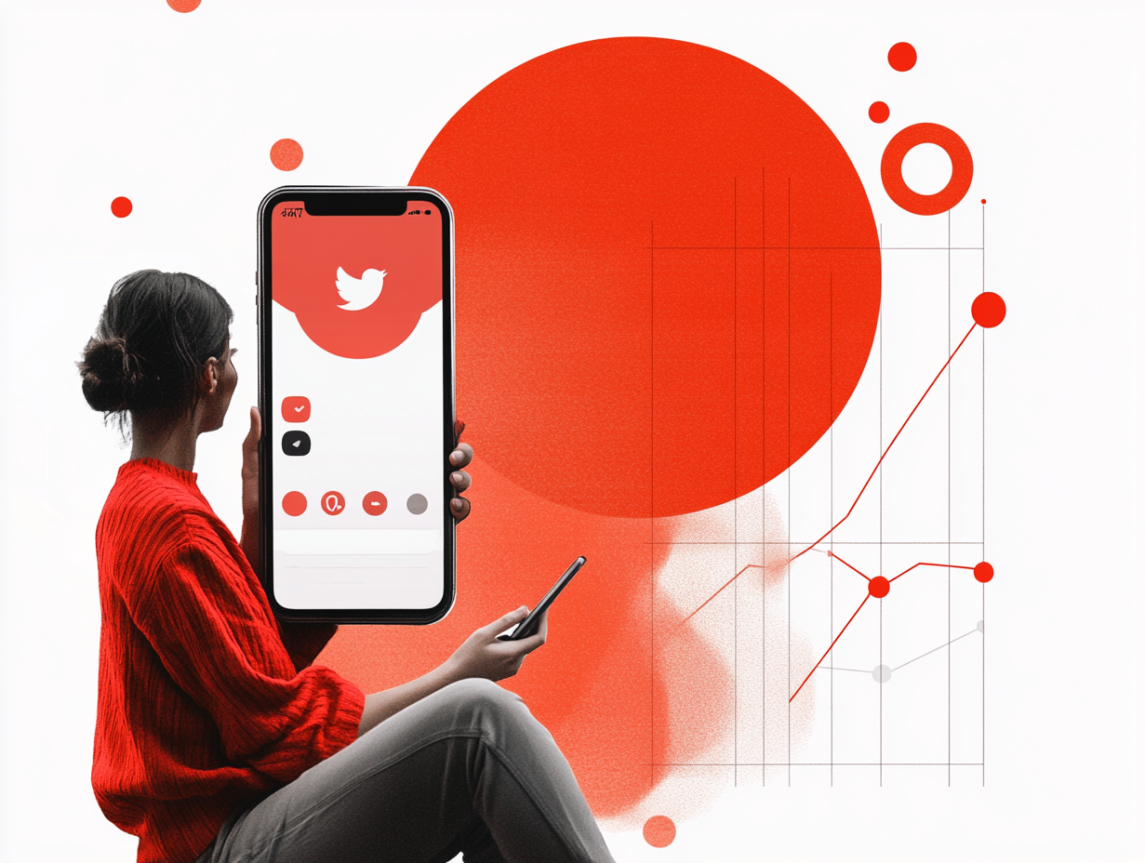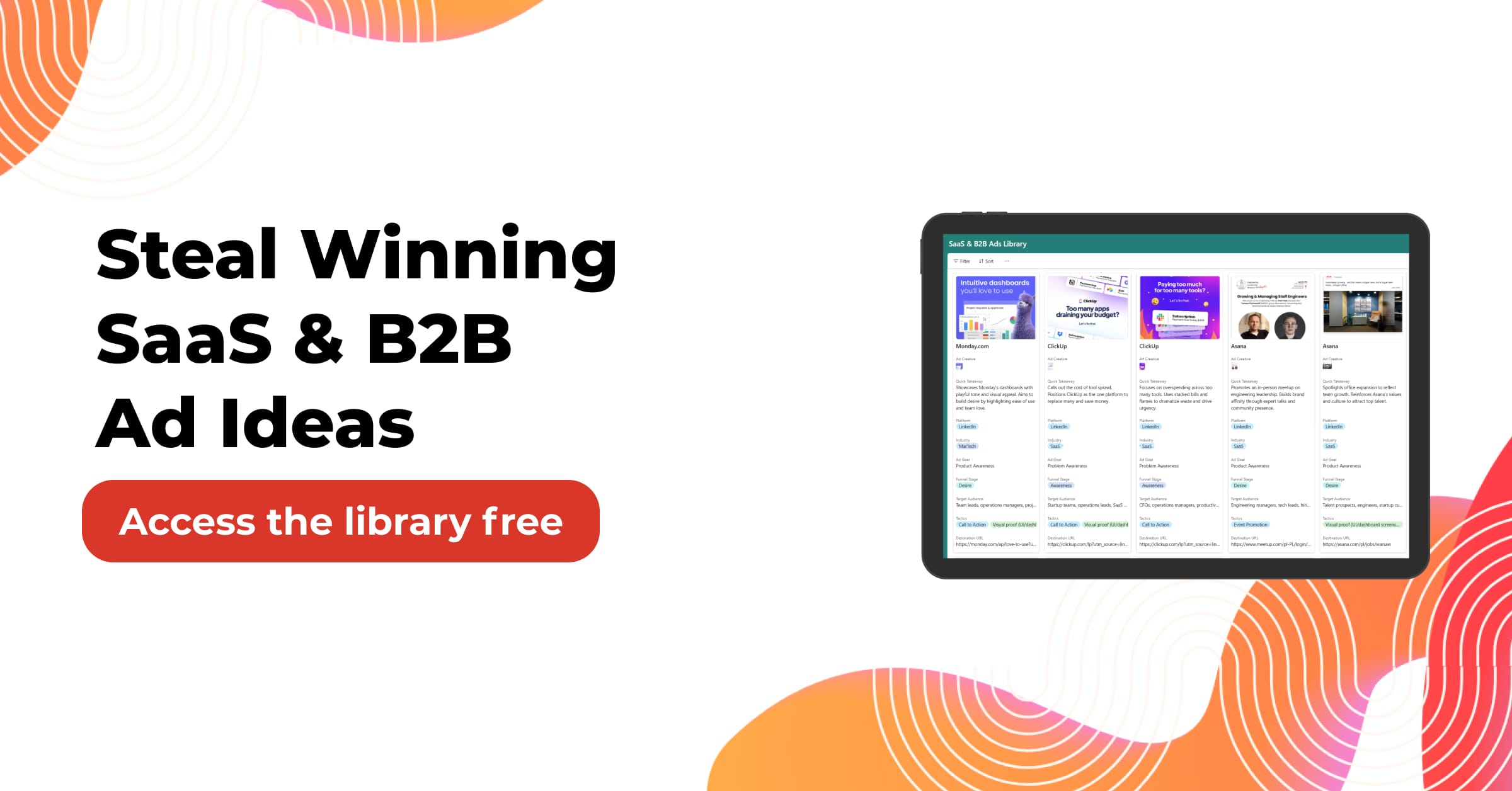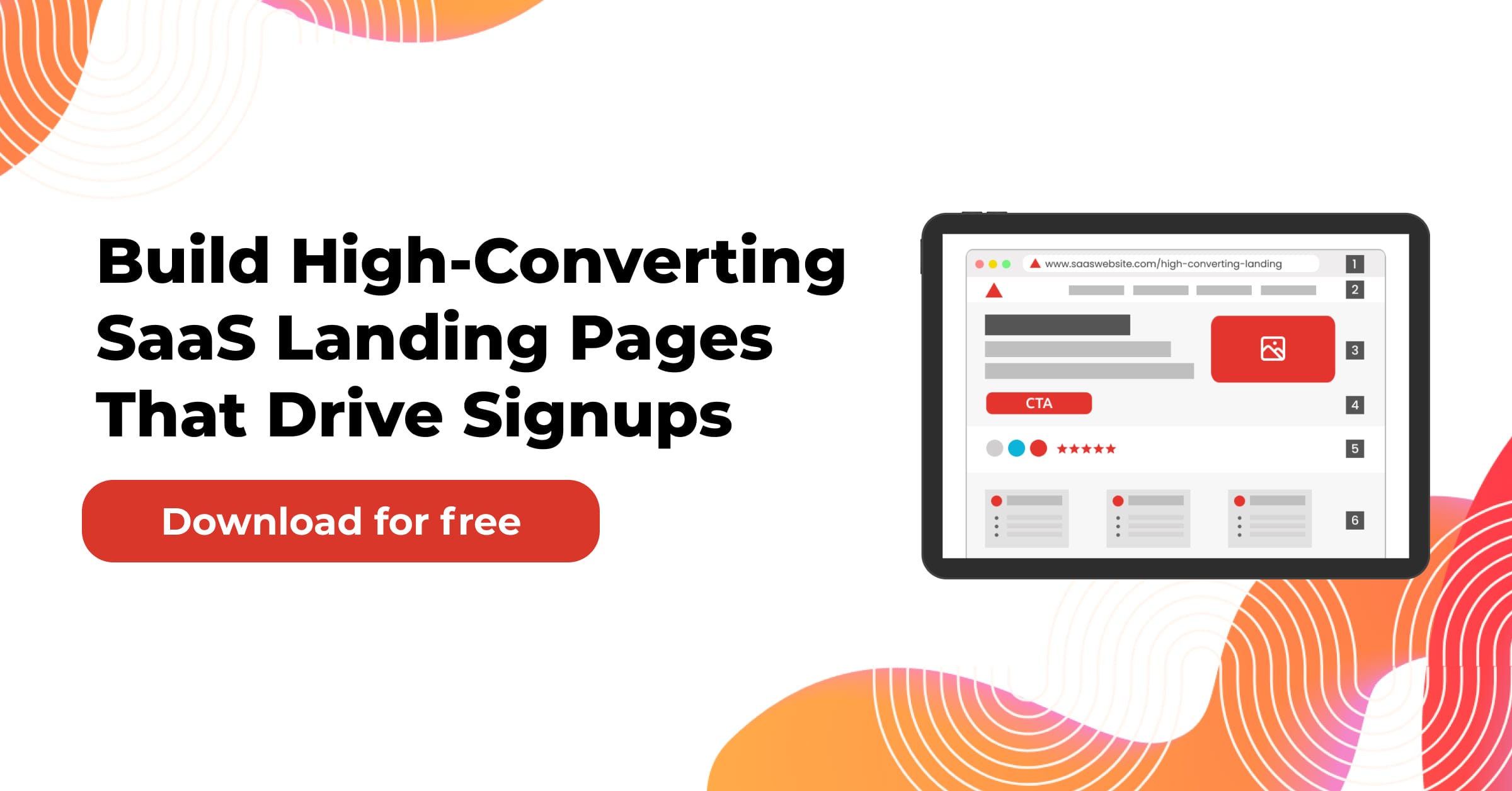Why These Platforms Matter for SaaS Founders
We live in a time where software is no longer just about solving problems, it’s about shaping behavior. Reddit, TikTok, and Threads aren’t just social platforms; they are masterclasses in engagement. They pull people in, not with heavy-handed marketing, but through emotion, design, and community dynamics. While SaaS companies spend countless hours refining dashboards, pricing models, and feature lists, these platforms are becoming daily rituals for millions.
So what can SaaS founders and marketers learn from them? Not just to be more entertaining or viral, but to rethink how their software works in the context of real user lives. To build products that people don’t just use, but return to again and again, not because they have to, but because they want to.
Table of Contents
Comparative Overview: Platform Strengths
| Platform | Primary Hook | Engagement Loop | Key Lesson for SaaS |
|---|---|---|---|
| Anonymity + Community | Post > Comment > Upvote > Return | Empower niche communities | |
| TikTok | Infinite Feed + Algorithm | Watch > React > Create > Repeat | Optimize for attention and speed |
| Threads | Real-time Conversation | Post > Reply > Boost > Discover | Encourage lightweight participation |
Understanding Platform Gravity: Why People Keep Coming Back
Let’s start with gravity, the force that pulls people back onto a platform day after day. Reddit keeps users engaged with endless niche threads and discussions. TikTok traps attention with a hyper-personalized feed that seems to read your mind. Threads stirs up real-time dialogue that keeps users checking in just to see what’s new.
Compare this to a typical SaaS product: people sign in when they need something, complete a task, and leave. It’s efficient, but not magnetic. And that’s a missed opportunity. Because gravity isn’t about manipulation—it’s about value, rhythm, and emotional resonance.
To cultivate gravity, SaaS platforms must build experiences that go beyond the transactional. Daily goals, content-driven UX, celebration of milestones, user-to-user discovery, social proof, and ambient learning- these are not “nice-to-haves.” They are the foundation of retention.
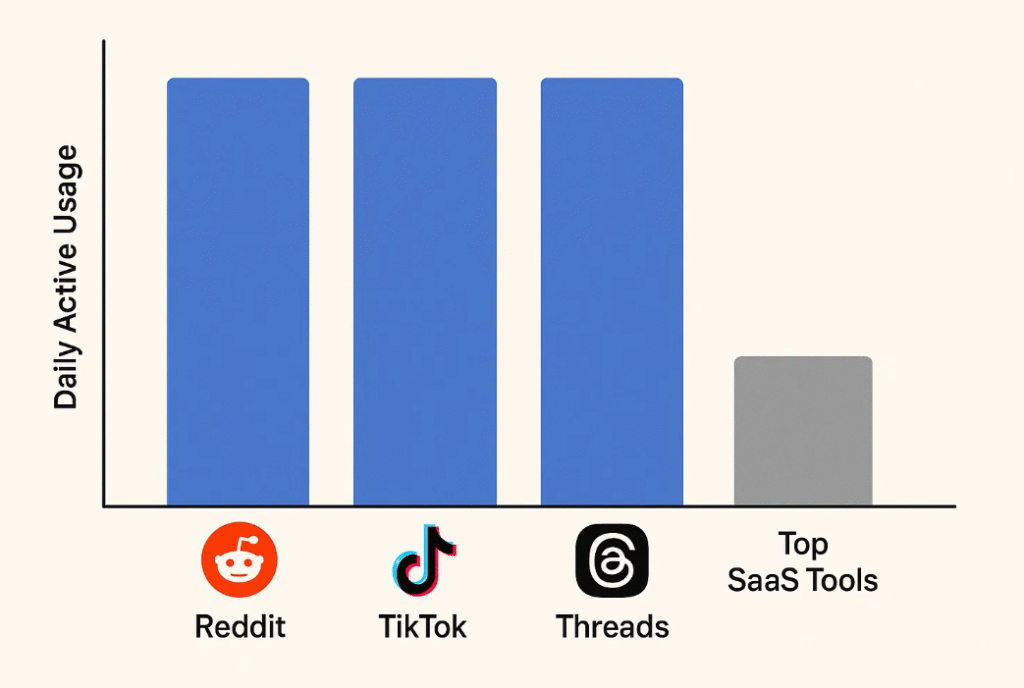
Related Article: https://www.adlabz.co/is-vertical-saas-the-end-of-generalist-platforms
What Reddit Teaches About Trust Without Identity
Trust is the currency of every platform. But Reddit flips conventional wisdom on its head: it creates trust not through real names, polished branding, or 1:1 personalization, but through depth, participation, and structure. Anonymous users upvote, comment, and contribute long-form posts daily, and we trust those posts based on context, history, and value.
SaaS companies often work hard to humanize their brand, showcase their team, and implement support layers. All good things. But what if we also leaned into enabling peer-to-peer trust? What if new users were welcomed by real-time chat, community upvotes, and transparent user history, not just a help doc?
Reddit teaches us that design can create safety even without identity. That reputation systems can replace verification. That the best communities are often the least polished, and the most authentic.
Case Study Example: Loom’s Viral Sharing Loop
Loom, a video messaging tool for teams, built a strong product-led growth loop by enabling anyone to record and share quick videos. The receiver doesn’t need an account to watch, which drastically reduces friction. Many recipients then create their own Loom accounts to respond or share back, thus continuing the loop.
This is a perfect example of platform-like behavior embedded in a SaaS tool. Just like TikTok thrives on the ease of watching and reacting, Loom succeeds by making participation effortless.
The TikTok Model: Designing for Flow, Not Just Function
Every second on TikTok is engineered for one thing: seamless progression. Whether you’re actively looking for something or not, the feed continues. It rewards curiosity. It tempts you to stay longer. And most importantly, it removes cognitive friction.
In SaaS, we build tools that focus on a specific area. But modern users don’t operate in high-focus environments. They’re multitasking, jumping tabs, checking Slack, and juggling ten priorities. The TikTok lesson? Design for that reality.
Quick tooltips that don’t block the interface. Onboarding flows that adapt to behavior rather than prescribe it. And most of all, UI elements that move you forward without demanding a full commitment.
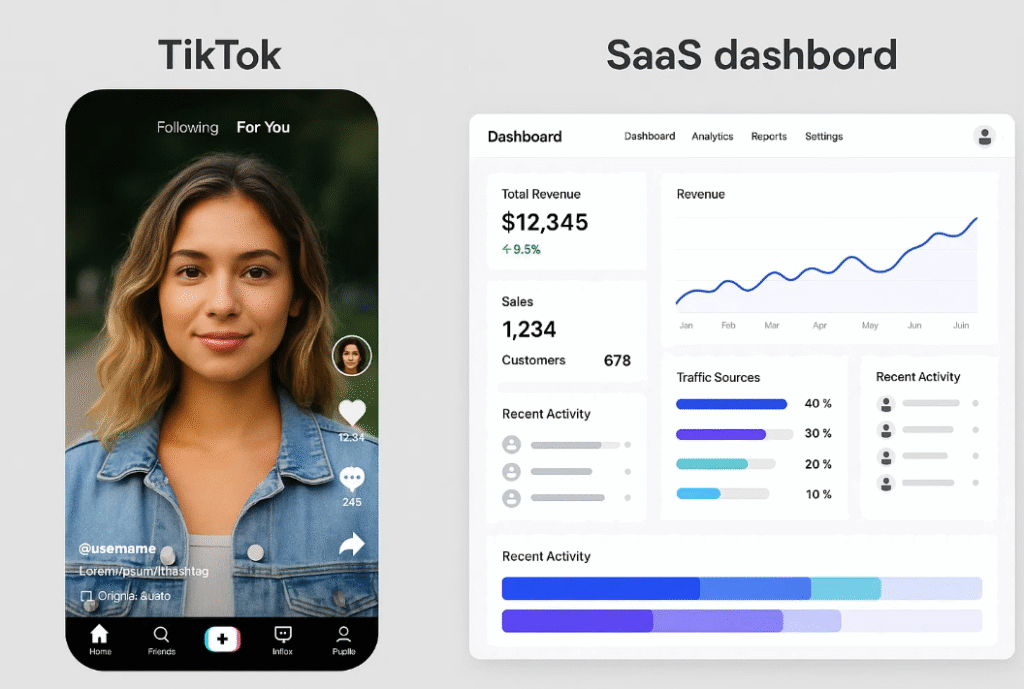
Threads and the Art of Real-Time Relevance
Threads was launched with immense anticipation, and its growth demonstrates the effectiveness of real-time content paired with social graphs. By pulling your Instagram network into a new format and framing content around replies and reposts, you made discovery and participation frictionless.
This highlights something every SaaS platform should think about: What are you doing to make your product feel alive in real time? Are feature updates buried in a changelog or surfaced interactively? Are users able to respond to changes in the product through feedback and community responses? Is there a way to show what others are doing on the platform now?
From Tool to Canvas: How Platforms Invite Creation
The best platforms don’t just serve up content—they make you part of it. TikTok’s recording interface is built to get you posting in seconds. Reddit removes Polish as a requirement. Threads let a single line of thought spark a wave of reactions.
SaaS often treats users as end-consumers of features. But what if we treated them as collaborators? Could they create templates, not just use them? Could they design workflows, not just follow them? Could their behavior shape the product in visible, shareable ways?
Niche is the New Network: Why Focus Wins
One of Reddit’s greatest strengths is how it empowers micro-communities. r/marketing isn’t the same as r/b2bmarketing. r/saas is nothing like r/bootstrapped. These focused threads thrive because they make people feel understood. Generic platforms struggle to create that.
Platform Lessons Summary Table
| Lesson | Platform Inspiration | SaaS Application |
| Prioritize Serendipity | TikTok, Reddit | Show unexpected value based on user behavior |
| Reduce Friction | Threads, Loom | Simplify login, sharing, and collaboration |
| Amplify Community | Empower users to help and teach each other | |
| Build Real-Time Visibility | Threads | Highlight user actions and trends as they happen |
How These Platforms Rethink Onboarding—and What SaaS Is Missing
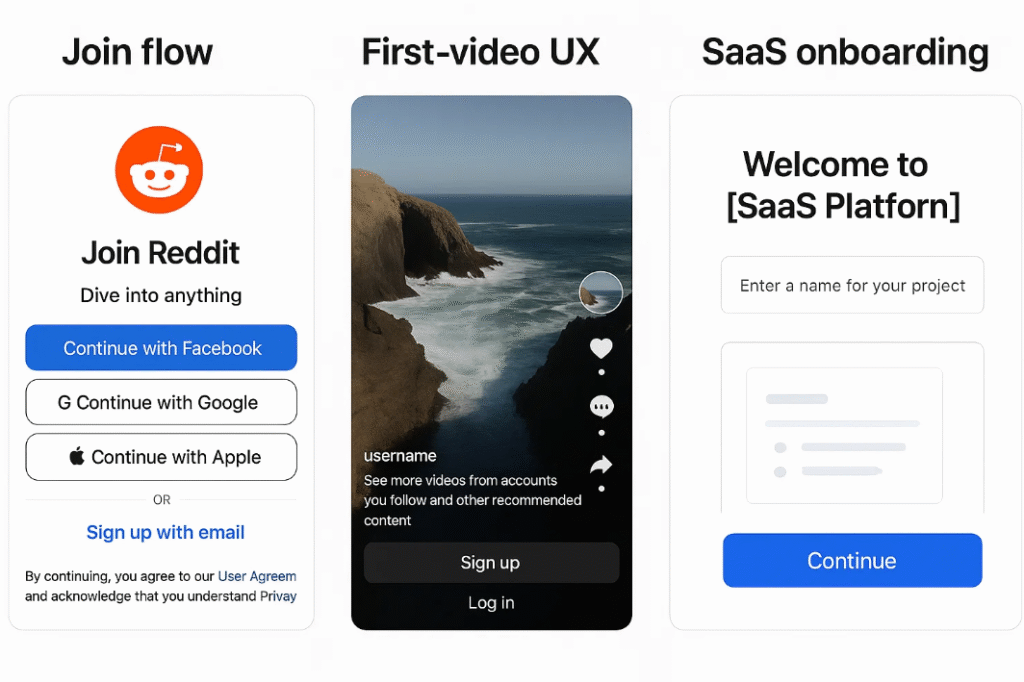
Reddit doesn’t ask for much when you first join. TikTok doesn’t even require a login to start watching. Threads uses your existing Instagram identity to prefill almost everything. These aren’t just good UX decisions—they’re deliberate moves to lower the barrier to entry and push you into the core experience fast.
In contrast, most SaaS onboarding flows are bloated. Five-step tutorials. Setup wizards. Email verification. Feature walkthroughs. None of it is bad, but it often delays the “aha” moment—the instant when a user understands the product’s core value.
SaaS products must rethink their onboarding like a stage performance: the opening act should hook attention and build momentum, not stall the show. Progressive onboarding, adaptive tutorials, and “skip for now” options are not shortcuts—they’re ways to accelerate time-to-value and let users explore instead of instructing them step-by-step.
Monetization by Behavior, Not Tier: A Lesson from Consumer Platforms
TikTok and Reddit don’t charge most users at all, but they monetize deeply based on behavior. TikTok shows targeted ads based on watch habits. Reddit monetizes power users and premium communities. Threads is still early, but will likely follow Meta’s broader monetization ecosystem tied to engagement.
SaaS can evolve beyond rigid plan tiers. Rather than monetizing features, monetize outcomes and intent. Charge when value is created. Introduce usage-based pricing where power users fund lighter users. Offer personal analytics, team benchmarking, or white-labeling for users who want more leverage.
This requires better measurement of behavior, which leads to the next insight…
Platform-Inspired Data Design: Make Metrics Meaningful
Reddit and TikTok don’t just collect data, they reflect it to users in compelling ways. “Your post got 3,400 upvotes in 2 hours.” “Your video is trending in 3 countries.” These aren’t just stats, they’re motivation.
In SaaS, dashboards often feel cold and mechanical. Clicks, time spent, sessions, logins—what do they mean to the user? Great platforms don’t just present data. They narrate it. They offer meaning.
Ask yourself: Are your analytics framed like a story or a spreadsheet? Can users quickly see growth, mastery, or momentum? Are success metrics tied to human goals or product jargon?
Design with emotional payoff in mind. A good metric makes the user feel smart, successful, or inspired to improve. That’s how platforms keep people coming back.
Building a Culture of Participation: It’s More Than Feature
Reddit and Threads are powered by user responses. TikTok relies on user content. Their feature sets are simple, but their culture is dynamic. This culture doesn’t come from design alone. It comes from what you celebrate, promote, and reward.
SaaS tools that foster participation—community feedback, user templates, upvoted suggestions- become more than tools. They become ecosystems. Notion’s creator gallery isn’t just useful. It gives users an identity. Figma’s community libraries don’t just save time, they signal belonging.
Participation culture starts with visibility. Are your users’ contributions highlighted? Are your power users known by name? Is there a place where people gather inside the product?
Without community momentum, a feature is just functionality. With it, a feature becomes a habit.
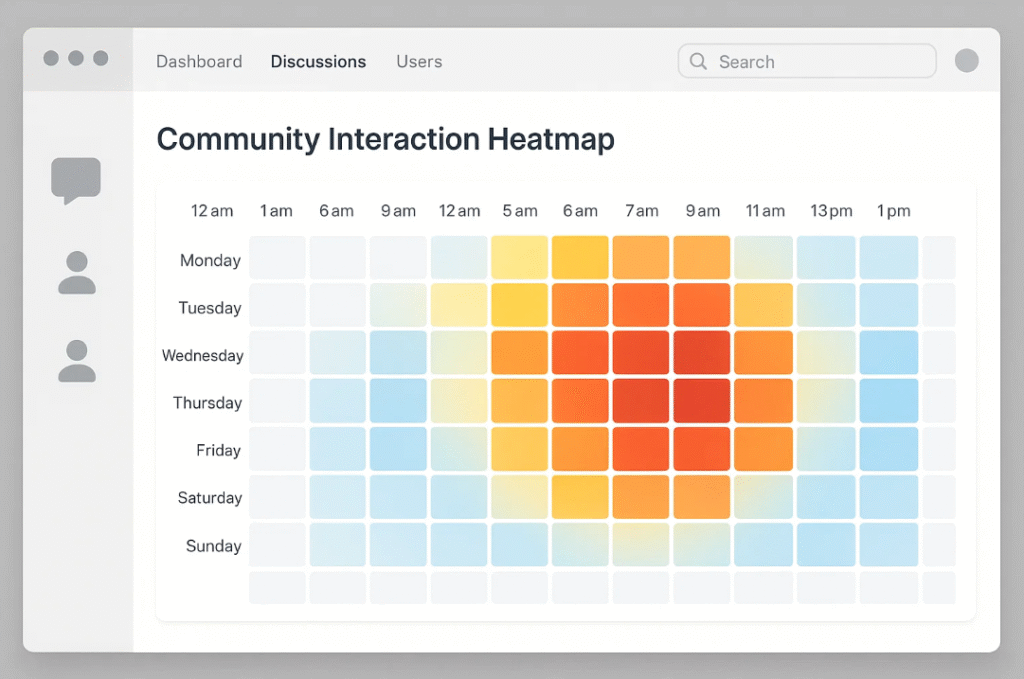
In-App Virality vs. External Distribution: Know the Difference
When we talk about virality, we often assume it means users invite other users. But there are two types: internal and external. TikTok thrives on external virality—users post videos that others share off-platform, driving new signups. Reddit leans more internal—users engage in a contained space, building community density.
SaaS must define what kind of virality it wants. Tools like Airtable or Zapier grow through internal virality—a shared project brings in new users. Tools like Loom or Calendly often grow through external virality, a shared link introduces others.
Design your product’s growth strategy to support the right loop. Prompt users to share externally. Or build flows that onboard new users seamlessly into a shared space. Either way, know your viral vector.
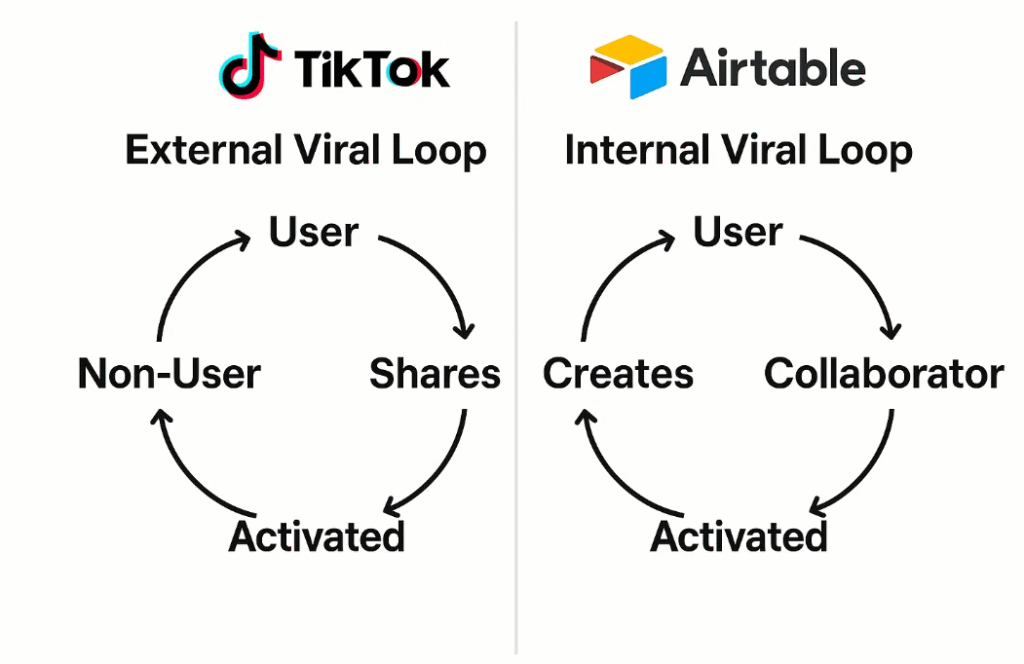
Final Thought: SaaS Is Competing with Platforms Now
Image Suggestion: Quote image with: “Software isn’t just service anymore—it’s a stage.”
When your user decides how to spend ten minutes of attention, you’re not just competing with other tools in your category. You’re competing with their favorite subreddit. With their TikTok scroll. With a quick dive into Threads.
That doesn’t mean you should become entertainment. But it does mean your product has to earn its place in their daily rhythm. You have to be delightful, fast, rewarding, and emotionally relevant.
Learn from the platforms. Not to copy their features, but to internalize their thinking. They’ve built ecosystems that millions return to, voluntarily, every day. That’s the future of SaaS.
You might also be interested:


